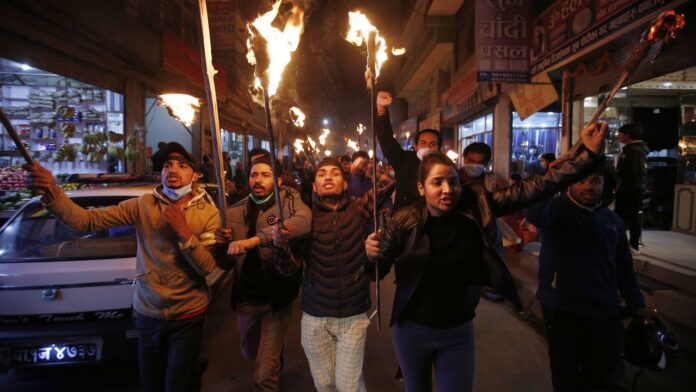Kathmand: Nepal is scrambling to form an interim administration following a week of deadly unrest that toppled the government, deepened political uncertainty, and reignited public anger over decades of entrenched corruption.
On Friday, President Ramchandra Paudel and the leadership of the Nepalese army held emergency consultations with political parties, legal experts, and representatives of Generation Z, the loosely organized youth movement that spearheaded the protests.
The talks aim to select a consensus figure who can temporarily lead the nation until fresh elections are organized.
The political turmoil was triggered by massive anti-corruption demonstrations led predominantly by young activists. What began as peaceful rallies quickly spiraled into violence when security forces attempted to crush the movement earlier this week.
At least 51 people have been confirmed dead, and dozens more injured, as clashes engulfed Kathmandu and other major cities. By Wednesday, the army imposed a strict nationwide curfew after parliament was set ablaze by angry protesters.
Among the names floated to head the interim administration is Sushila Karki, Nepal’s first female Chief Justice, now 73.
She has earned respect for her outspoken stance against corruption during her tenure in the judiciary. Speaking to AFP, Karki stressed that the country needs experts to come together to figure out the way forward, adding that despite the violence, parliament still stands as an institution.
But the youth movement remains skeptical. Sudan Gurung, one of the most visible Generation Z leaders, has demanded nothing short of a dissolution of parliament, arguing that the old guard has lost legitimacy.
Our first demand is the dissolution of parliament, he declared, calling for a complete political reset.
Another activist, Nimesh Shrestha, confirmed that a multi-stakeholder meeting was scheduled with President Paudel, Army Chief General Ashok Raj Sigdel, Karki, and youth leaders to map out the next steps.
The unrest reflects long-brewing frustrations in a country of 30 million, where nearly half the population is under 40 but feels excluded from decision-making.
Rampant corruption, slow economic growth, and rising unemployment have fueled anger, with many young people demanding not just reforms but a total overhaul of the political system.
Observers note that Generation Z activists are not aligned with traditional parties and instead are calling for a radical transition” that they believe will make a better Nepal.
Their role in forcing the resignation of the government has already shifted the country’s political landscape.
Nepal has faced repeated political instability since the abolition of its monarchy in 2008, cycling through more than a dozen governments in less than two decades.
The current crisis, however, is seen as one of the most serious yet, combining youth-led street power with institutional breakdown.
The search for an interim consensus leader whether Karki or another respected figure will determine whether Nepal can restore order through compromise, or if the protests will push the nation into deeper confrontation.
For now, the army’s curfew remains in effect, with armored vehicles stationed in major cities and checkpoints restricting movement.
Citizens are watching closely as negotiations unfold, wary of both political stagnation and a possible slide into authoritarian control.
One thing is clear: the voices of Nepal’s youth can no longer be ignored, and the next government will be judged by whether it can deliver not only stability but also a credible fight against corruption.



